Lubrication - Off Highway Mining Equipments - A Perspective
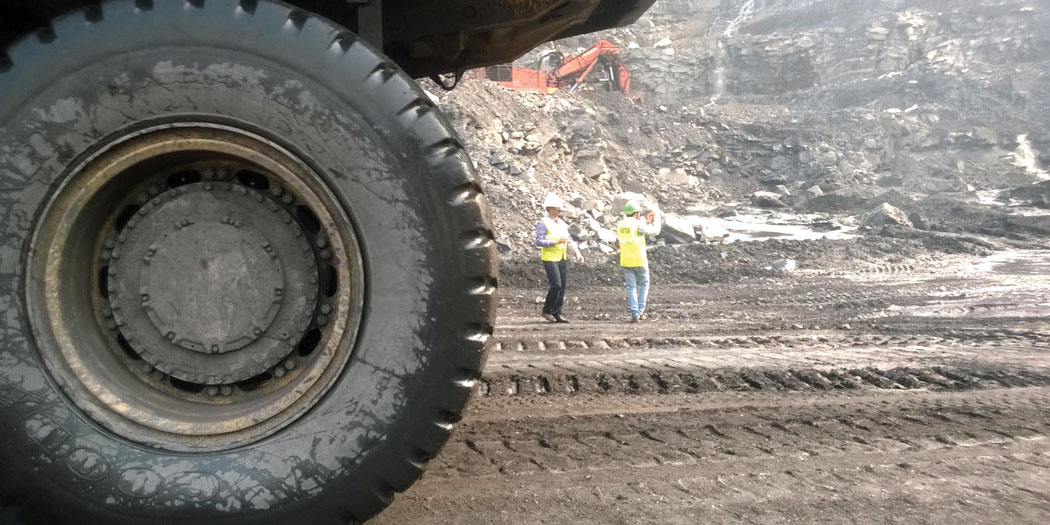
Mining – Past & Present
Mine production has undergone important changes during the 20th century with a shift from underground to open pit mining techniques. Early in the century, underground mining dominated in developed countries, and as mining evolved in emerging economies, open-pit mining became more common.
Surface mining is a very old practice. In North America, for example, mining for copper at the surface of the Michigan Upper Peninsula appears to have started as early as 5000 B.C. The ore produced through the hard labor of thousands of miners went to the manufacture of hand tools and jewelry.
There is much evidence that suggest that mining of coal; iron-ore, copper; lead-zinc has been going on in this country from the time immemorial. However, the first recorded history of mining in India dates back to 1774 when an English Company was granted permission by the East India Company for mining coal in Raniganj. In India, 80% of mining is in coal and the balance 20% in other minerals, totaling 89. Mining equipment has evolved into some of the most fascinating functional mechanical structures known to man. Today while the worldwide market for mining equipment is around US $ 100 Billion, India’s market is only around US $ 1 Billion (or 1 %). But it will change dramatically over the next few decades as mining activities are expected to pick up rapidly from here given the humungous appetite for power in India and the GOI push to infrastructure sectors like cement, steel etc.
Today’s Mining Equipment – Are They Large?
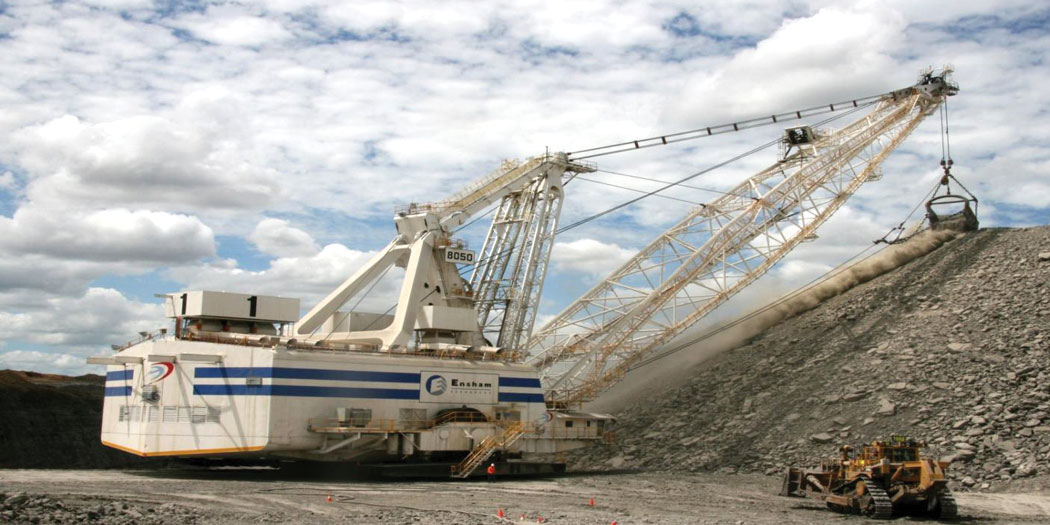
India produces about 90% of Coal from open cast mining. Open cast mines deploy large number of state of the art Heavy Earth Moving Machines like Draglines, Shovels, Dumpers etc. Draglines are the largest mobile equipment in the earth which remains the choice wherever geo-mining condition permits because of their high production versatility and low cost per unit moved.
The Caterpillar 797 is the largest dump truck built till date. They stand 23 feet 9 inches tall when the dump bodies are down, and 49 feet 3 inches when they’re tilted up. But most gym floors aren’t reinforced to withstand their 560,000-pound weight when empty, much less the 1,280,000-pound total when burdened with 360 tons of rocks and dirt. The mining roads they operate on, for instance, must be three times the width of the widest truck running on them, and the service shops often need enlarging and re-equipping.
The CAT 797 & other similar dump trucks are this big because the machines built to tear open the earth have grown ever larger. When the world’s biggest shovels were grabbing the planet in 60-ton scoops, the trucks built to haul stuff away were rated at four shovels full. Now shovels such as RH 400, EX8000 etc. are in the 90-to-100-ton range, and efficient mine owners need trucks that swallow 360 to 400 tons per load. Thus when shovels grow again, so will the trucks.
Mining Sector – Challenges
The mining sector faces a host of industry challenges, including fluctuating commodity prices, slimming margins, and increasing expectations from shareholders and national governments (i.e. CSR activities, environment upkeep etc.).
According to a 2014 report, these factors have driven mining companies to focus on production volume above all else, which in turn has led to an even greater industry challenge—maintaining productivity levels. In recent years, productivity growth in the mining sector has been on the decline, and addressing this issue is at the top of almost every mining executive’s agenda.
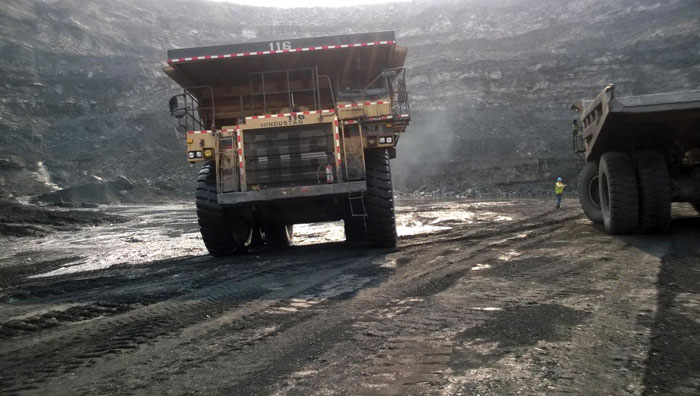 According to the report, implementing best-in-class maintenance practices can be the difference between achieving acceptable equipment availability rates of 85% and achieving industry-leading availability rates of more than 90%. There are a range of services available to mine operators that can arm them with the right information when it comes to improving equipment maintenance and performance.
According to the report, implementing best-in-class maintenance practices can be the difference between achieving acceptable equipment availability rates of 85% and achieving industry-leading availability rates of more than 90%. There are a range of services available to mine operators that can arm them with the right information when it comes to improving equipment maintenance and performance.
To maximize profitability, mining companies are undergoing major initiatives to monitor and control those factors that can impact production. One of the significant contributors to both operational cost and production capacity involves the heavy mining equipment that keeps the ore moving every day. The operating and maintenance costs of mining equipment not only represent a large proportion of a mine’s operational expenditures but they also threaten a mine’s profitability. A truck that is taken offline for a shift has a big financial production impact, but for a shovel, the impact can be many times that. In addition, the ability to extend the operating life of the very costly haul truck or a shovel is significant with respect to the success of a mine.
Focusing on "Lubrication Cost" and Not the Lubrication Cost
In today’s off-highway equipment world, the driving force in new product development is to enable end users to have lower operating costs. Equipment manufacturers have responded by increasing equipment efficiency, primarily by increasing equipment size, increasing the load carrying capacity and operating speeds while constantly striving to reduce both equipment cost and weight. Increasing equipment size has triggered the increase in the engine’s size and horsepower, which in turn has placed more demand on the drivetrain hardware components (i.e. transmission, axles, hydraulics and gears) and correspondingly on the fluids that lubricate these components and keep this equipment running optimally for their expected useful life cycle.
Typically, there have been increases in power, power density and torque with each successive model. This increase in power density generates more heat, raising oil sump temperatures throughout the drivetrain. Transmissions, differentials and final drives are subjected to increasingly higher loads as machines become capable of shifting larger quantities of material and much faster. The surface finish of components, their design and metallurgy have steadily improved but they still require the highest level of lubrication to deliver maximum performance and remain durable.
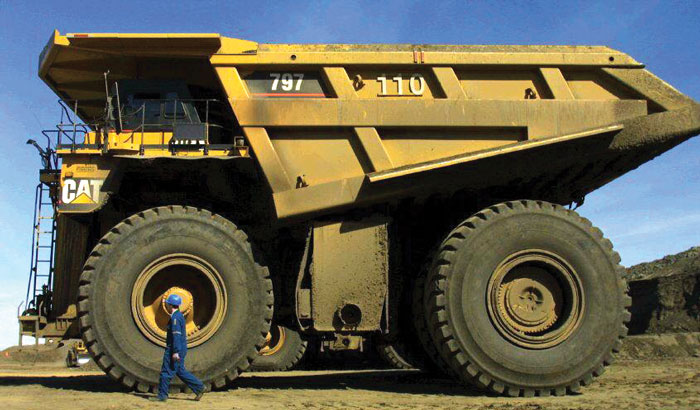 Lubricant manufacturers have developed specialized engine oils, transmission and drivetrain oils to provide the appropriate level of performance. Over the past few years, Indian lubricant manufacturers have developed specialized power transmission fluids designed to provide the appropriate level of performance required to meet stringent OEM specifications. Higher operating temperatures coupled with higher load factors has driven the development of new oils with increased wear protection, enhanced friction performance, in addition to a number of other performance attributes.
Lubricant manufacturers have developed specialized engine oils, transmission and drivetrain oils to provide the appropriate level of performance. Over the past few years, Indian lubricant manufacturers have developed specialized power transmission fluids designed to provide the appropriate level of performance required to meet stringent OEM specifications. Higher operating temperatures coupled with higher load factors has driven the development of new oils with increased wear protection, enhanced friction performance, in addition to a number of other performance attributes.
Power transmission fluids (in SAE 10W , 30 & 50) are specially designed heavy duty transmission fluid for off-highway power shift and certain non-synchronized manual transmissions, wet brakes, final drives and hydraulic systems meeting the rigorous performance requirements of Caterpillar TO-4, Allison C-4 and other off-road equipment specifications. It contains carefully selected base oils assuring the up most oxidation, thermal and shear stability for long oil life while the specialized additive system provides additional oxidation resistance, balanced frictional performance, wear protection and maximum power transfer during operation. They also contains additional special additives to enhance cold temperature performance, rust, corrosion, and foam protection, along with outstanding compatibility of clutch friction material and seals. The use of such dedicated driveline fluids brings in huge benefits in terms of increased performance and massively increased protection. There are also the final drive axle oils (FDAO) and synthetic gear oils which are available in the Indian market.
For shovels, hydraulic oils are now available from Indian lube marketing companies which can increase productivity and even help in reduced fuel consumption leading to substantiate savings for the users. Long drain hydraulic oils are also available which can provide 50%-100% increase in the oil drain interval (ODI). All such oils have passed the tests during various field trials conducted in Indian conditions.
In engine oils selection, the mining industry needs to move from the API CH4, CI4, CI4 Plus to the CJ4 grades in SAE 15w40 viscometrics. To increase fuel economy, some users contemplate using lower viscometrics like 5w30 etc., but many OEMs have their reservation w.r.t. engine durability.
Extending oil drain intervals in offhighway engines and machines can be challenging though. Dirt ingress and coolant leaks occur more frequently, and at times oil drain intervals are established to minimize damage from such problems. The cost reduction associated with longer oil and filter change intervals must be balanced against the risk of shortened engine life and the cost associated with less reliability if oil drain intervals are extended too far.
Thus correct fluid and adherence to proper lubrication regimes is important not only to achieve higher productivity but also to reduce cost of repairs and downtime. Using the correct specialized fluid undoubtedly can cost more, but that cost is still insignificant when compared to the cost of the equipment, repairs and lost revenue in downtime. Low-price generic fluids are not robust enough, nor do they have the correct specifications to protect gear and transmissions components in high performance and heavy machinery operating in hostile conditions.
Given the use of the correct lubricant, maintaining fluid integrity is still an important consideration. Machines are usually working in dusty conditions so filter condition must be maintained properly to achieve extended equipment life.
As an alternative to manual lubrication, automatic lube-delivery technologies have been introduced specifically for machinery in the off-highway marketplace. In particular, automatic centralized lubrication systems in different configurations have gained significant ground by enabling the right lubricant to be supplied at the right time and at the right lubrication point -- without manual intervention. The size of a machine, type of required lubricant, number of lubrication points and other factors will guide initially in choosing the most viable centralized lubrication system for an application. The primary purpose is to supply lubrication points continuously with metered lubricant while the machinery is in operation and all the bearings are moving.
Condition Based Monitoring
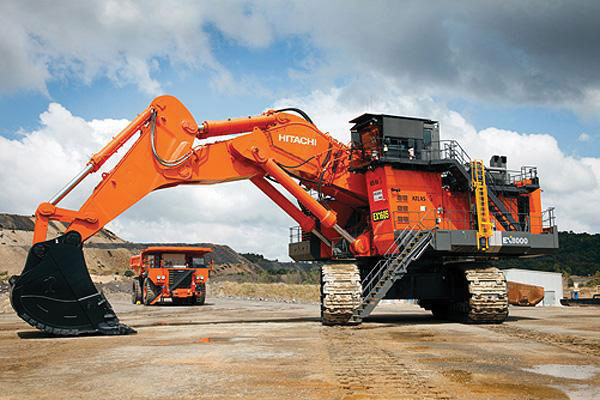 With escalating operating costs, mining companies need to constantly monitor the performance of their heavy mobile equipment. Profitability depends on having the means to accurately diagnose any performance issues before they lead to production downtime.
With escalating operating costs, mining companies need to constantly monitor the performance of their heavy mobile equipment. Profitability depends on having the means to accurately diagnose any performance issues before they lead to production downtime.
Equipment maintenance costs represent between 30% and 50% of direct mining expenditures. Most often mining companies employ traditional preventative and reactive maintenance programs for critical equipment, which take up the majority of the maintenance people time.
New advancements in equipment monitoring technology enable time constrained technicians and engineers to discover, diagnose and act on a fault before it results in production downtime or serious damage to the equipment or operator. By remotely accessing onboard equipment data, personnel can immediately view and analyze equipment and operator performance through a variety of dashboards, user defined key performance indicators and alarms, to facilitate immediate action.
While equipment monitoring is not new to the mining industry, traditional methods, unstable technology and the extreme mining conditions have; often plagued the effectiveness of these first generation solutions.
Maintenance personnel can now monitor the entire mining fleet and receive early warnings of developing problems, prompting action and reducing negative impact on operations. Ultimately, vital equipment spends less time on the shop floor and more time in the mining field.
Similarly, it is always suggested that maintenance personal take advice and support from lube marketing companies to get their oil analysis and trends monitoring done for each individual equipment. Such expertise in Condition Based Monitoring (CBM) and Total Fluid Management (TFM) services is now available to the users in the Indian context. It’s important for mine companies to partner with lubricant suppliers that are able to understand and account for the diverse needs of an operation.
Conclusion
In a mine, you are constantly striving to maximize machine availability and drive down your production and maintenance costs in tough conditions and in remote areas. Mining tools have evolved into massive machines. Greatly increased component sizes and load limits have placed tremendous responsibility on the machinery designer and the lubricant system manufacturer, to design and engineer systems that can be counted on to effectively lubricate and sustain these machines. Effective lubrication of these heavily loaded components is absolutely critical to efficient, reliable, economical operation of a mine site. Choosing the right lubricants and services for your needs can help to make a real difference to your bottom line.
